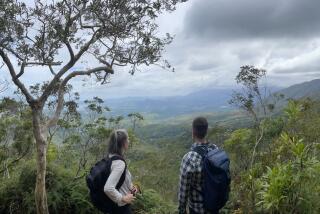SCIENCE / MEDICINE : How Much Do You Know About Science
1. Which planet is most like Earth, both in size and distance from the sun? a. Mars b. Jupiter c. Venus d. Pluto e. Saturn 2. When did the first manned spaceflight occur? a. 1947 b. 1957 c. 1959 d. 1961 e. 1963 3. Which of these cities has had a major earthquake in the last 150 years? a. San Francisco b. Charleston, S.C. c. Anchorage, Alaska d. a and c e. a, b, and c 4. Which of the following gases contribute to the greenhouse effect? a. nitrogen b. carbon dioxide c. methane d. a and b e. b and c 5. Which of these can move fastest through air? a. a hawk b. light c. sound d. a jet e. a rocket 6. About how close is the nearest star? a. 25 trillion miles b. 54 billion miles c. 93 million miles d. 250,000 miles 7. Which of these is smallest? a. a molecule b. an atom c. a proton d. a gene e. a cell 8. About how old is the Earth? a. 6,500 years b. 55 million years c. 4.5 billion years d. 450 billion years e. 3.7 trillion years 9. When was Charles Darwinâs theory of evolution first published? a. 1620 b. 1789 c. 1859 d. 1961 e. 1963 10. What is the leading cause of death in the United States? a. AIDS b. heart disease c. cancer d. diabetes e. none of the above 11. When was the computer invented? a. 1815 b. 1897 c. 1934 d. 1946 e. 1961 12. About how many cells are in the human brain? a. 150,000 b. 2.8 million c. 15 billion d. 2 trillion e. 150 trillion 13. How many chromosomes are in a human cell? a. 46 b. 252 c. 12,000 d. 50,000 e. 1.2 million 14. About how many genes are in a human cell? a. 1 b. 100 c. 1,000 d. 100,000 e. 10 million 15. What proportion of aviation accidents are caused by poor weather conditions? a. 40% b. 20% c. 10% d. 5% e. 1% 16. About how much information can be stored on an optical computer disc? a. 10 pages b. 300 pages c. 10,000 pages d. 300,000 pages e. 10 million pages 17. How many species of plants and animals are there? a. 500 to 3,000 b. 5,000 to 30,000 c. 50,000 to 300,000 d. 500,000 to 3 million e. 5 million to 50 million 18. What is the most common element in the universe? a. carbon b. helium c. hydrogen d. oxygen e. silicon 19. Smoking increases the risk of which of the following types of cancer? a. lung cancer b. oral cancer c. bladder cancer d. all of the above e. none of the above 20. What is an exploding star called? a. a neutrino b. an anomalon c. a galaxy d. a black hole e. a supernova 21. What galaxy is Earth in? a. the Milky Way Galaxy b. the Andromeda Galaxy c. the Sombrero Galaxy d. the Large Magellanic Cloud e. Earth is not in a galaxy 22. Which of these animals is most closely related to humans? a. an orangutan b. a chimpanzee c. a dolphin d. a salamander e. a baboon 23. On average, about how much time do people dream each night? a. 10 minutes b. 30 minutes c. 90 minutes d. 4.5 hours e. 7 hours 24. What is a catalyst? a. a substance that speeds up a chemical reaction b. a substance that slows down a chemical reaction c. a very bright star d. a very dim star e. a newly discovered mineral that is harder than diamonds 25. About how many acres of tropical forest are cleared each year? a. 30 million b. 5 million c. 1 million d. 200,000 e. 10,000 26. What is a quark? a. a unit of measurement equal to 0.003 inch b. an ancestor of modern-day dogs c. a part of a computer d. a subatomic particle e. the virus that causes AIDS 27. How much hazardous waste is generated in the United States each year? a. 50,000 tons b. 4 million tons c. 250 million tons d. 2 billion tons e. 100 billion tons 28. What country launched the first satellite into space? a. Japan b. the Soviet Union c. the United States d. England e. France 29. What countryâs scientists have won the most Nobel prizes for scientific research? a. Japan b. the Soviet Union c. the United States d. England e. France 30. What do you call a substance that can readily carry an electric current? a. conductor b. catalyst c. DNA d. virus e. insulator Answers 1. c 2. d 3. e 4. e 5. b 6. c 7. c 8. c 9. c 10. b 11. d 12. c 13. a 14. d 15. a 16. d 17. e 18. c 19. d 20. e 21. a 22. b 23. c 24. a 25. a 26. d 27. c 28. b 29. c 30. a






